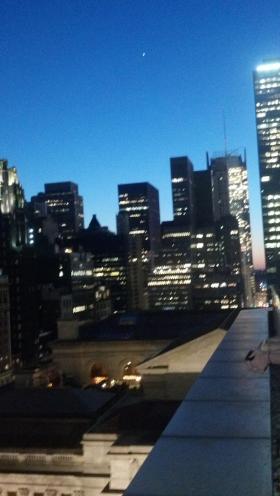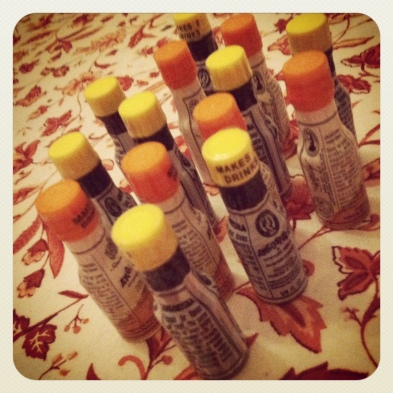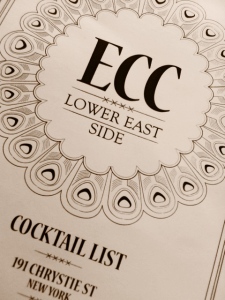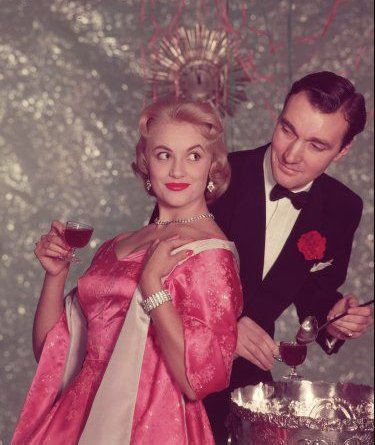You are currently browsing the category archive for the ‘St. Germain’ category.
A couple weeks ago The Boston Shaker hosted a tasting event with Barritt’s Ginger Beer and my obsession with the stuff has now been revived. I love the contrast of spicy and sweet and because it combines well with such a variety of other flavors it’s a must for any summer bar.
Before the recipes, a bit about ginger beer. First produced in England in the mid-18th century, the early recipe included ginger, sugar, water, and lemon juice. This mixture was then combined with a yeast and bacteria combo, known as a ginger beer plant, which caused fermentation. Some of the early ginger beers could have had an alcohol content of up to 11%. Modern ginger beer, like the Barritt’s we sipped at the Boston Shaker, are not fermented, but rather carbonated (no boozy ginger beer here). Barritt’s was first produced in the 1870s by William John Barritt, a man looking to make a living to support his large family. Barritt took advantage of a small bottling machine in a dry goods store in Hamilton, Bermuda, and a delicious ginger beer was born.
My friend Anne Marie and I sampled all four drinks that were being mixed by Paul Imbesi. Two of the cocktails rose to the top.
The Bohemian Cooler
(created by Boston bartender Tom Schlesinger-Guidelli of Island Creek Oyster Bar)
1 ½ oz St. Germain
1 oz rye whiskey
¾ oz lemon juice
2 dashes Angostura bitters
Shake over ice. Strain into a Collins glass filled with ice and top with 2 oz ginger beer. Garnish with lemon wheel.
This is a great summer drink—the richness of the rye, the flowery-sweet St. Germain, and the tart lemon juice are brightened and heightened by the spicy ginger beer. I just love this drink.
Amatitan Mule
(created by Ezra Pattek of Bar Lab, Miami)
2 oz silver tequila
2 thin slices of jalapenos
½ lime, quarted
1 bar spoon agave nectar
Muddle jalapenos, limes and agave. Add tequila and shake. Strain into a Collins glass filled with ice and top with 2 oz ginger beer. Garnish with lime and jalapeno wheels.
Now this cocktail is not for the faint of heart (or taste buds)—this is quite spicy with both the jalapenos and ginger beer. This isn’t the kind of drink I would usually chose if I saw it on a menu, so I was a bit surprised by how much I enjoyed this.
My advice for this weekend (and my own personal plan)—grab a six pack of ginger beer and get shaking and mixing. If you aren’t up for the recipes above, try something simple like a Dark and Stormy, a simple combo of a dark rum, ginger beer and lime juice. Cheers!
You may talk of brisk Claret, sing Praises of Sherry,
Speak well of old Hock, Mum, Cider and Perry;
But you must drink Punch if you mean to be Merry.*
I grew up in a punch drinking family. Granted the stuff my family ladles out each Christmas is of the non-alcoholic variety—rainbow sherbert, gingerale, maybe some fruit and lots of ice. I had a glass yesterday, and even though many a boozy version have passed over these lips, this tame variety still says “party” to me. It is bubbly, colorful, and pretty tasty. And something about sharing a drink from a communal bowl seems especially appropriate for a holiday celebration, doesn’t it?
What is it about a giant bowl of fruited and sugared booze? For me, there is something nostalgic, comfortable and epic about it. Maybe it’s because as long as I can remember a punch bowl meant our special Christmas libation? Or because people have been enjoying this kind of communal drink since the 17th century? Or maybe it’s the seemingly endless variations of recipes—ranging from the very simple 2-3 ingredient variety to recipes with 10-15 ingredients?
Punch changed the way we drink. Its origins probably lie with 17th century sailors who had run out of beer or wine and were left with only brandy or some other spirit that was too much to drink on its own. To their booze they added some sugar, maybe a little water and some citrus (which had the added bonus of protecting against scurvy) and punch was born. The popularity of these mixtures catapulted distilled spirits out of the realm of medicine and into the public drinking consciousness, eventually opening the door for those other alcoholic mixtures we call cocktails. So, yes, punch changed the way we drink.
If you want to learn more about the history of punch read David Wondrich’s new book Punch: The Delights (and Dangers) of the Flowing Bowl. Since the book’s launch party at Drink about a month ago, I have joined the ranks of punch loving Bostonians. Check out this book for a fascinating and entertaining history of punch; and my friends at Dudekicker share a great interview with Wondrich.
So with the punch craze is in full start-up mode, I, of course, made a punch for my own holiday party last weekend (which was a pretty fun party, if I do say so myself). I know I am about the 1,00,000th person to give this sage party hosting advice, but one of the best things about serving punch is that you are then free to actually enjoy your party, instead of spending the evening mixing something for each guest. The most you have to do is lift the ladle or replenish ingredients.
I chose a recipe for Harvest Punch shared by The Boston Shaker. It was a huge hit! With easy, yet interesting, flavors like rye, St. Germain, apple cider and ginger beer it pleased the variety of palates at the party, cocktail enthusiast and neophyte alike.
Harvest Punch
2 cups Rye Whiskey (I prefer Old Overholt; delicious and inexpensive)
1 ½ cups St. Germain
2 cups apple cider
½ cup lemon juice
2 12 oz. cans of ginger beer (I like Barretts)
Jerry Thomas bitters, to taste (the recipe calls for Angostura, but I thought the autumnal flavors of the JT bitters worked well here)
Mix in a large punch bowl over an ice ring or large block of ice (I made one using a tupperware container). Garnish with diced apples.
The ingredients may change, but the essence of punch remains—making merry with delicious spirits in the company of friends and loved ones. Now that’s something to be grateful for this Christmas season. Cheers!
*18th century song Wondrich quotes in Punch
In ancient Norse mythology the Northern Lights, or aurora borealis, were reflections off the spectacular armor of the Valkyries, the warrior women who escorted the dead across the northern skies to the legendary Valhalla. For the Romans, Aurora was the goddess of the dawn. Each day to rejuvenate herself she flew across the northern sky to announce the coming of the sun. And Finnish folklore tells of mythical foxes that spark fires in the sky with their tales. You may be wondering what this mythology has to do with cocktails…
Comfortably seated at Craigie’s crowded bar (this is one popular place!), Holly and I enjoyed a Northern Lights while we waited for Maura to join us. This drink is SO good! With scotch, St. Germain, lemon and tiki bitters this cocktail has a wonderful range of flavors, like the beautiful spectrum of colors of the meteorological phenomenon of the same name. The smoky, sweet, and tart flavors are enhanced with house-made tiki bitters which feature ginger, orange essence and baking spices. One of the things that Holly and I liked best about this drink was the subtly of the St. Germain. Now, I totally love the elderflower liqueur, but it often takes over a drink. Here, however, the scotch holds it at bay and the St. Germain just adds a delicate bright sweetness. A drink that stands up to the legends of ancient mythology– complex, magical, and pleasing.
Maura soon joined us and we moved onto the Cocktail Whim. This was my 3rd adventure in this cocktail tasting and I love the concept more and more each time. Once again, Carrie served up four great drinks– three of which featured Benedictine, one of my favorite liqueurs. We started with a Belle du Jour—brandy, Benedictine, house-made grenadine topped with Champagne.
Our second drink was a classic daiquiri— rum, lime juice, and simple syrup. Deliciously simple. Simply delicious. Next, we sipped on a Vieux Carre—rye, brandy, sweet vermouth, Benedictine, Angostura and Peychaud’s. The rich, complexity of this drink paired nicely with our delicious burgers. Our final drink, a Colleen Bawn—a flip made with brandy, Benedictine and yellow Chartreuse (and an egg, of course)– was a nice herbally ending to our tasting. Then as an extra treat, Carrie let us sample a drink she’s working on for next Sunday’s event at Green Street. All I’ll say is that it’s heavy on the smoky mezcal and leave the rest for next Sunday.
Cheers!
Tonight Molly and I stopped by the newly open Boston Shaker for a little shopping and a St. Germain cocktail. This store is just fabulous– you can find tons of bitters, all sorts of cocktail equipment (think juicers, strainers, muddlers), and yum things like Luxardo maraschino cherries. And owner Adam Lantheaume also has a great selection of books (I picked up The Fine Art of Mixing Drinks by David Embury) that are a cocktail nerd’s dream. Can you see why I love for this place?
 While perusing the library, we enjoyed a classic St. Germain cocktail: the delicious artisnal liqueur and proseco on the rocks with a lemon twist. I love St. Germain– so much so that a couple summers ago was dubbed “the summer of St. Germain.” Made from handpicked wild elderflower blossoms that have a short 2-3 week bloom in the foothills of the Alps, this stuff has a flavor that’s hard to describe. Its enigmatic, yet familiar. Its sweet with hints of lemon, grapefruit, melon, and maybe a little pear too. It is just so delicious! And its so versatile. Drink it simply with sparkling water and lemon, or in any number of your favorite cocktails like a French 75, a mojito, or a daiquiri, or just on the rocks with an orange twist. It is so good one friend said he thinks it would even make gasoline taste good. While that may be a slight exaggeration, it might also be kind of true. St. Germain is pretty damn good.
While perusing the library, we enjoyed a classic St. Germain cocktail: the delicious artisnal liqueur and proseco on the rocks with a lemon twist. I love St. Germain– so much so that a couple summers ago was dubbed “the summer of St. Germain.” Made from handpicked wild elderflower blossoms that have a short 2-3 week bloom in the foothills of the Alps, this stuff has a flavor that’s hard to describe. Its enigmatic, yet familiar. Its sweet with hints of lemon, grapefruit, melon, and maybe a little pear too. It is just so delicious! And its so versatile. Drink it simply with sparkling water and lemon, or in any number of your favorite cocktails like a French 75, a mojito, or a daiquiri, or just on the rocks with an orange twist. It is so good one friend said he thinks it would even make gasoline taste good. While that may be a slight exaggeration, it might also be kind of true. St. Germain is pretty damn good.
Cheers!
Karaugh and I got together after work at Deep Ellum to discuss Sleep No More—an amazingly powerful A.R.T. production which I saw Sunday night. Discussing incredible theater needed to be matched with equally high quality drinks.
For our second round, I handed my list of 100 must-have cocktails to Jen and asked for a suggestion. She chose the Hemingway Daiquiri. I hesitated for a moment because until recently, my vision of a daiquiri was one-sided—I could only think of the frothy, strawberry variety that are perfect to enjoy poolside on a hot summer day. Before those frozen, fruity versions gained popularity (due in part to the invention of the home blender), the daiquiri, developed in the late 19th century in Cuba, had been enjoyed as a simple concoction of rum, lime juice, and sugar. In the early 1930s Ernest Hemingway went to Cuba. After a long day of writing and fishing, he would enjoy a cocktail (or two). Hemingway especially enjoyed those mixed by Constantino Ribalaigua at La Floridita Bar. Cocktail legend tells us that one version of the daiquiri, with grapefruit juice and maraschino liqueur added to the rum and lime, was Hemingway’s favorite. Whether that story is true or not, what Jen mixed up for me was delicious—sweet and tart at the same time.
While I sipped my daiquiri, Karaugh chose the Germination off the menu. She’s a big fan of St. Germain, so was immediately drawn to this drink. And it did not disappoint. Does anything with the deliciously sweet elderflower liqueur ever disappoint??? I look forward to making this one at home soon, and I suggest if you like St. Germain to try this. Here’s the recipe:
Germination (from Deep Ellum)
2 oz gin
¾ oz St. Germain
½ oz lemon juice
2 dashes orange bitters
Shake over ice. Strain.
Cheers!
Last night we celebrated Paula and her birthday at the Beehive. I really love the atmosphere, look and feel of the place, and the staff were nice, so it made for a great spot for a birthday fete. I will add though that I think the drinks, or better yet making of the drinks, could use a little something. The cocktail menu has some interesting stuff that are executed well, but our request for an Aviation and Last Word was met with a look of confusion. Does it make me a cocktail snob to think less of a place that isn’t familiar with either of these two classic cocktails? Hey, I have standards. My second issue was measuring…its pretty important. Our Last Words, made with my instruction, were not measured…and frankly were okay, but not the fabulous mix of herbal, sweet, and tart I love so much. Its kind of hard to get exact equal parts with a pour. Now that I have gotten that out of my system, onto good things…
So, here’s what a few of us enjoyed for our first round (from the menu).
 I got the Bee-Stro which featured Maker’s Mark, St. Germain and apple cider served on the rocks. This was a really nice way to start the evening. It was rich, a bit tart and slightly sweet. It’s strong on the bourbon, light on the St. Germain and cider, so it warmed me from the inside out—really nice on a cold winter evening. Paula had the Valentino—vodka, blood orange juice and passion fruit. She shares a birthday with the great Italian filmmaker Frederico Fellini, so having a cocktail named for an Italian seemed appropriate and she enjoyed it very much. Bridget got the Satin Doll, a combination of champagne and Canton Ginger Liqueur. It was a bit too gingery for her taste, and judging by the fact that she didn’t finish, she wasn’t crazy about it.
I got the Bee-Stro which featured Maker’s Mark, St. Germain and apple cider served on the rocks. This was a really nice way to start the evening. It was rich, a bit tart and slightly sweet. It’s strong on the bourbon, light on the St. Germain and cider, so it warmed me from the inside out—really nice on a cold winter evening. Paula had the Valentino—vodka, blood orange juice and passion fruit. She shares a birthday with the great Italian filmmaker Frederico Fellini, so having a cocktail named for an Italian seemed appropriate and she enjoyed it very much. Bridget got the Satin Doll, a combination of champagne and Canton Ginger Liqueur. It was a bit too gingery for her taste, and judging by the fact that she didn’t finish, she wasn’t crazy about it.
In the end, my little gripes were overshadowed by the fact that we were there for Paula not the drinks. When you’re enjoying an evening with friends, even slightly imperfect cocktails go down easy. Happy Birthday, Paula! Cheers!
I will always have a soft spot in my heart for the French 75 because it is what sparked my passion in cocktails. I can’t quite remember where I had my first one—maybe Bouchee or Brasserie Jo—but after one sip I was hooked. Maybe it’s the lightness and delectable drinkability. Or the mild, refreshing flavor of gin and lemon which are given a sparkling lift from champagne. As Kirstin and I enjoyed our French 75s last night, she may have said it best, “It’s like the best lemonade you ever had with a little bubbly added.” I also have fond memories of a variation at The Modern in NYC in which St. Germain replaced the simple syrup.
 There are bunch of different stories about the origins of the French 75. Was it created at Harry’s New York bar in Paris? Or did American soldiers in the French countryside during World War I “make due” with what they had on hand to make something akin to a Tom Collins? And maybe there are other stories too.
There are bunch of different stories about the origins of the French 75. Was it created at Harry’s New York bar in Paris? Or did American soldiers in the French countryside during World War I “make due” with what they had on hand to make something akin to a Tom Collins? And maybe there are other stories too.
Whatever the origins may be, the name comes from the French-designed 75-millimeter field gun. As Harry Craddock said in his 1930 The Savoy Cocktail Book, this drink,”hits with remarkable precision.”
The French 75 is absolutely delicious! Cheers!














